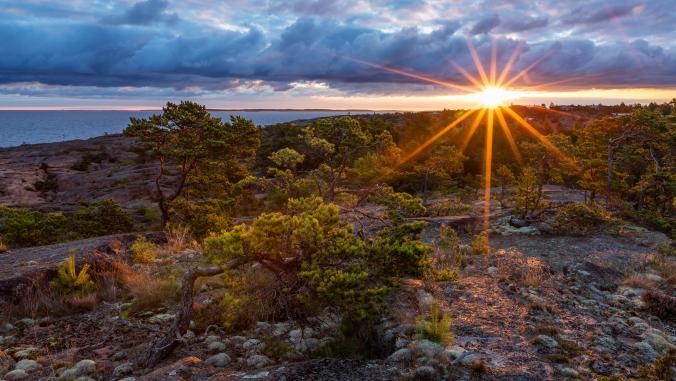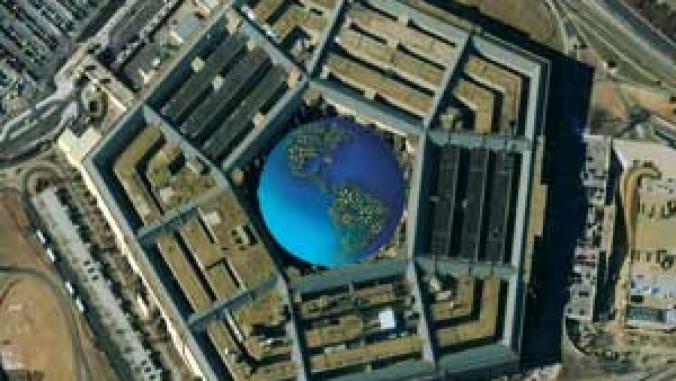Cutting the Cord to Fossil Fuels to Get to New Normal
Rob Watson’s exploration of how to leverage change brings him to No. 10 of the 12-point list by Donella Meadows: changing the structure of the system. It'll be an uphill battle to get to New Normal because the current infrastructure was designed using the principle of Fractal Stupidity, writes Watson.

Number 10 on the list of most effective places to leverage change the system -- in this case getting from forget-about-the-planet-it's-fine-we're-talking-human-species-threatening Old Normal to living-in-harmony-with-Mother-Nature-otherwise-she's-going-to-stomp-us-flat-like-a-bug New Normal -- is to change the physical structure of the system.
Huh? Doing what you need to do is only No. 10 on the effective list???
Well, let's think about it. We all agree that centralized, planet-cooking, emission-belching (I get paid by the hyphen, in case you were wondering . . . ) power plants feeding leaky-sieve buildings is a bad thing. So, all we have to do is replace all of the stinky power plants with nice clean renewables and get rid of all the old leaky buildings. There . . . we're done! (In about a century.)
Changing the physical structure of a system, in this case our built environment, is supremely effective; it's just slow. And, when trying to leverage broad-scale change, slow equals low. In order for these physical changes to happen, several other leverage points will need to be tripped, as we'll go into in subsequent pieces.
One reason we have such a very long row to hoe is that most of current infrastructure was designed using the principle of Fractal Stupidity (though it seemed like a good idea at that time).
In energy, we take limited, polluting fuels that are difficult and often fatal to extract and combust them at 30 percent efficiency to deliver desired services (illumination, motor drive, comfort, etc.) wastefully. For our English-speaking audience, this is called "economically efficient."
Meanwhile, the great fusion reactor in the sky, a.k.a. Mr. Sun, provides 2,000 times more clean energy than is required for all human uses, not including the two-thirds of the solar energy that falls on water. For the great un-washed, the technical term for this kind of energy is "expensive."
To recap: The Problem is our planet's main source of energy is inherently distributed and our energy consumption is mostly distributed. Naturally, "The Solution" is to take remote, finite energy sources, concentrate them and then re-distribute them (losing another 5-10 percent along the way).
Water, if anything, is worse: Rainfall is inherently distributed, water use and resulting wastewater is inherently distributed as well. It follows logically that we rely on rain falling on a limited geographic area, concentrate it, distribute it, wast . . . sorry, USE it, re-concentrate the waste at the treatment plant, then put concentrated (mostly treated, but sometimes not) waste back out into the hydrosphere. And, when we find that it gets difficult to flush our distributed toilets in the desert with drinking water, we concentrate distributed fossil fuel energy into desalination plants on the coast and re-distribute the concentrated "clean" water back into the desert. Yowza, this is junkie logic.
Better we should use what David Hodgeson calls "Fractal Wisdom" which is the order reflected by nature and dictated by chemistry, biology and physics. A fractally-wise system would require a two-way interconnection with the energy grid for all new buildings and any existing building that demanded it in the short term, followed by a mandatory two-way connection not long thereafter.
This would allow distributed energy-preferably renewable-to be reintroduced to the system and reduce the need to build more, ever further-flung central stations. Our system would require buildings to go up, instead of out, while at the same time providing some of the features that we like about "out" (space, privacy, greenery, etc.).
In addition to being places of shelter, commerce, culture, etc, New Normal buildings would be powerplants, reservoirs, sewage treatment plants, gardens or farms.
But won't this be expensive? If we truly understood our place in the planetary food-chain, this is a fractally-stupid question, one that wouldn't be asked in a fractally-wise system.
Of course, balancing all of these different elements can be tricky. For example, China has a requirement that all dwelling units in new buildings receive two hours of sunlight. But this mandate has had the unintended consequence of significantly spreading out typical high-rise residential developments, which makes non-motorized mobility and access very difficult and is one of the drivers of growing car use there.
Pipes and wires are ties that bind us physically and economically today and we are now discovering that these Old Normal ties, in fact, have us hog-tied. We need to bring the virtual and distributed intelligence of the telecom and information revolution to our built environment by making our buildings design-smart (designing as though local conditions mattered) as well as technically smart (making them active participants in the various services that support them as opposed to dumb, passive recipients of commodities).
So changing the physical structure of a system is a high-effectiveness, but low leverage way of getting to New Normal. Eliminating Fractal Stupidity and replacing it with Fractal Wisdom is slow going, especially when Ego-nomics rewards Fractal Stupidity and requires Fractal Wisdom to write a "business case." But, as Dana Meadows always eloquently responded when asked if we have enough time to solve our problems: "We have exactly enough time, starting now."
Rob Watson is the executive editor of GreenerBuildings.com. You can reach Rob at [email protected]
Image by weirdvis.





